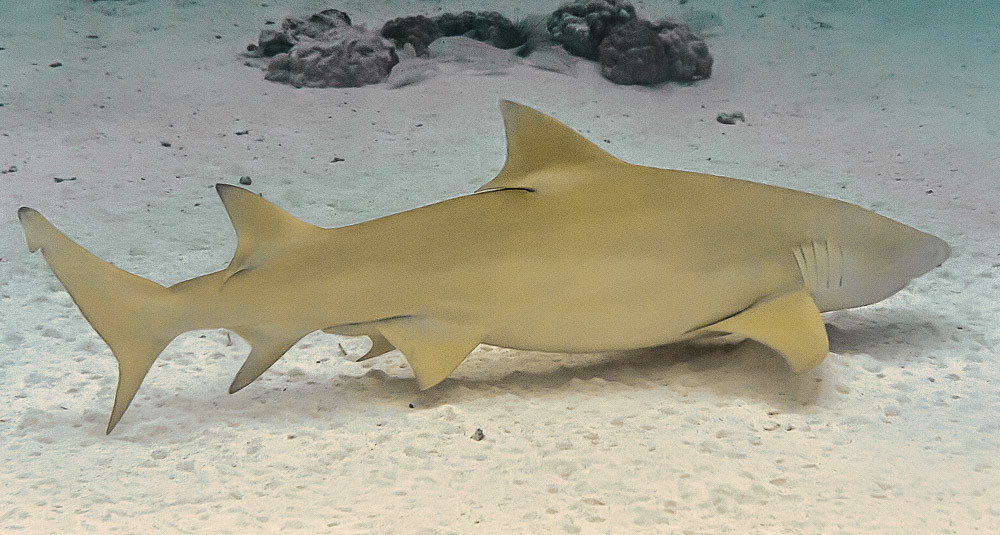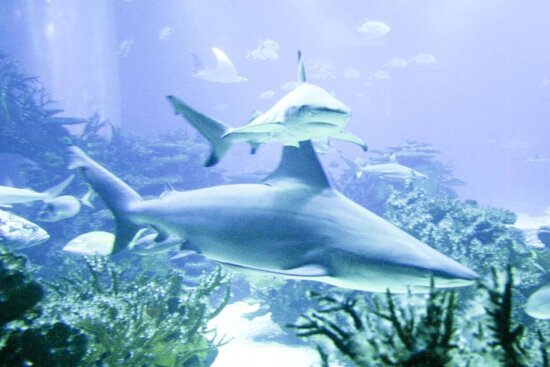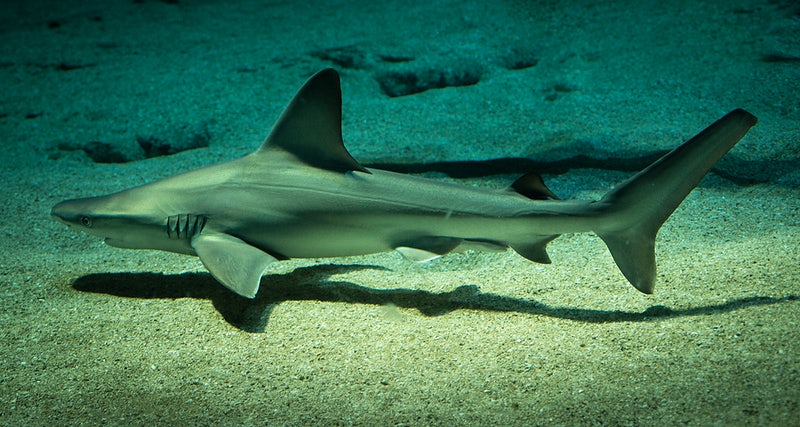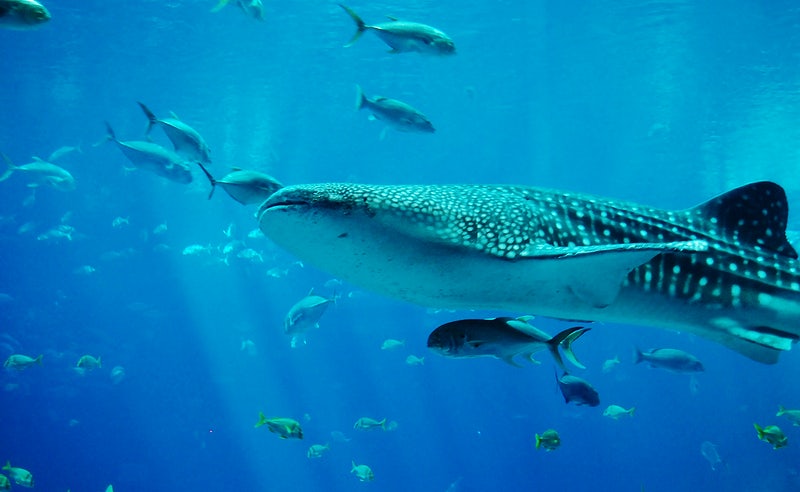The wild creature of the ocean with an average life of 30 years – The Lemon Shark is not widely distributed over the globe when compared to the other species of sharks. There are just 1,000 species of Lemon sharks that you can find in the ocean water. However, the sharks are labeled as “Near Threatened” because of the disappearing species from the oceans.
Let’s move on to explore more about their living habitat!
Who are Lemon sharks?
Lemon Shark – they are named so because of their yellow colour! The lemon sharks are very famous and the most researched species in the shark’s kingdom because it is quite easy to handle them in captivity as compared to other sharks. The lemon sharks are about 11 feet in length and weigh 190 kilograms. They are the powerful, giant carnivorous species which does not attack humans unless provoked – actually, they are the most social and the less aggressive shark’s species.
Some distinctive features of lemon sharks are listed below:
1: They have a pair of dorsal fins that are triangular in shape, one is located at the mid of their back and the other is close to the tail.
2: The snout of Lemon sharks is blunt or pointed and is smaller than the size of their mouth.
3: The teeth are broad and narrow with pointed edges and a ragged base.
4: They bear dermal denticles that are large and are covered with 3 to 5 crests.
5: They have to camouflage by changing the colour of their fins.
Where do Lemon sharks live?
The Lemon shark swims on the sandy floor of seas and oceans of the coastal habitat. They live in the water of the subtropical regions to a depth of 300 feet. Commonly, they are found living in the Gulf of Mexico, the Caribbean in the North West of the Atlantic Ocean and the West Indies. They live in the ocean water from New Jersey to Southern Brazil, along the Senegal and Ivory Coast of Africa in the Eastern Atlantic Ocean and in the West Coast of Africa as well.
In the North of the Pacific Ocean, they are found living in the Gulf of California and Baja California to Ecuador. The smaller shark’s species live in the rivers and Bays whereas the larger species tend to swim in the deep ocean water. What habitat do Lemon sharks exhibit?
What habitat do Lemon sharks exhibit?
Lemon sharks are not widely distributed in the ocean water. The predatory hunters live in the coral reefs and tropical mangrove ecosystem bounded by rivers and Bays. They prefer warm water habitats to maintain the level of metabolic processes. Sharks mostly avoid those areas which are covered with thick seagrasses because they face difficulty in locating the prey. The selection of habitat is based on the biological capabilities and the environmental elements. The species show migratory behavior and are headed towards ocean waters but usually thrive in the coastal water. Some species are also spotted living in the firewater but they have a short stay trip there and move towards their destination.
Well, this is all about the distribution and habitat of lemon sharks! Further, we are going to explore a bit more to understand them clearly! Read on!
What food do Lemon sharks eat?
As they are bottom dwellers, so they feed on foodstuffs such as bony fishes, catfish, jacks, mullets, crustaceans, croakers, cowfish, porcupine fish, guitarfish, eagle rays, stingrays, crayfish and crabs. Sea fish and small sharks are also included in their menu. Lemon sharks do not eat habitually, they feed only when they feel hungry, and even they consume only one meal in a day! Diet conscious!
Do they have any living threats?
Living in the oceans is not easy at all! The animals have to face so many threats there. Some of the common threats that a Lemon sharks have in their natural habitat are enlisted:
Humans
No doubt humans are the major threats to all the species of sharks. Due to human activities, the lemon sharks are titled as nearly endangered species because humans catch them for medical, culinary and research purposes. Overfishing, finning, industrial and agricultural development are the reasons for the vanishing of lemon sharks from the oceans.
Change in climatic conditions
The climate changes greatly affect the populations of lemon sharks in the seas and oceans. Due to changes in climatic conditions over a period of time, the living habitat of these shark’s species are also abolished – the coral reefs and mangroves! Thus lemon sharks migrate to other localities to survive and breed.
Predatory threats
Adult lemon sharks have no known enemies because they are sociable creatures. Some species of sharks prey on the young ones of lemon sharks. However, under some circumstances, the lemon sharks are the predator of their own members – cannibalism!
Final words
Lemon sharks came into the limelight due to their yellow color! The species of sharks are not widely distributed in the ocean like other sharks but are found swimming in many regions all over the globe. While living in the ocean water for a long period of time they are being threatened by many factors such as climate change, global warming, predators, and humans – the major reason behind the disappearance of sharks from the seas and oceans. That’s why they are labeled as near-threatened or endangered species!







